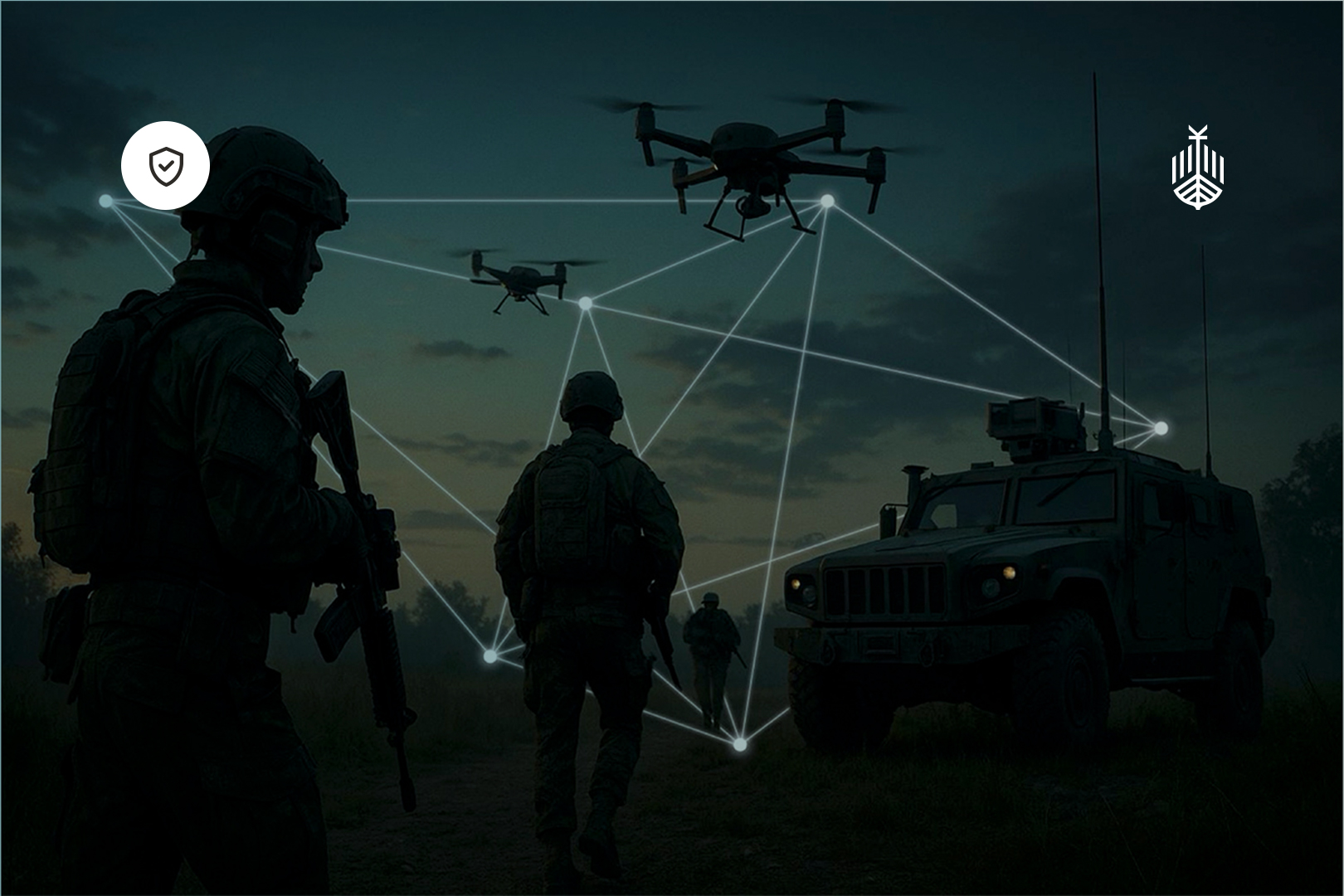
WRITTEN BY ZOHA NASER
Zoha is a Research Assistant based in the Centre for Science and Security Studies (CSSS) at King’s College London. She holds an MA in Science and International Security from King’s and a BA in International Relations from Royal Holloway University of London. Zoha focuses on a number of research areas, including nuclear security, non-proliferation, supply chain security and space power.
Prelude
In this article Zoha Naser and Sarah Tzinieris highlight that although Russia’s incursion of the Zaporizhzhia Nuclear Power Plant is the most dramatic example of a state targeting civil nuclear infrastructure, it is by no means an unprecedented or isolated incident. State-sponsored attacks on the civil nuclear industry have in fact occurred throughout the atomic age, and not only in wartime. They argue that a reckoning of the history of such attacks not only enriches analyses of Russia’s targeting of Ukrainian nuclear infrastructure, but deepens our understanding of the full spectrum of risks to the industry.
Problematic assumptions about civil nuclear risks
In a recent phone call with his Ukrainian counterpart, President Donald Trump proposed a US takeover of Ukrainian nuclear power plants (NPPs), claiming that American ownership could offer the facilities “the best protection”. When questioned about the audacious proposal, President Volodymyr Zelenskyy was firm in his response that Ukrainian nuclear facilities belonged “to the Ukrainian people”.
The Russian invasion of Ukraine has ignited fierce discussion about the safety and security of critical nuclear facilities in war zones. Moscow has infiltrated both the Chernobyl and Zaporizhzhia NPPs as part of its ongoing campaign against key Ukrainian state infrastructure, drawing condemnation from around the world. A recent example was an event on 14 February 2025, when a drone struck the confinement structure at the Chernobyl NPP – the scene of the world’s worst nuclear disaster in 1986 – tearing the shelter and igniting several fires which smouldered for days. These Russian attacks on Ukrainian nuclear infrastructure have, for the first time in the atomic age, brought civil nuclear facilities (referring to the non-military sphere of global nuclear activity) to the forefront of public consciousness as a specific target of warfare.
As an NPP currently in operation, the incursion of Zaporizhzhia poses a particularly heightened risk of an uncontrolled radiation release; an event that if it was to occur would have catastrophic impacts on the environment and human health, and could also spill over Ukraine’s borders and become a transnational issue. Nevertheless, the assumption that a state-sponsored attack on civil nuclear industry is an unprecedented and isolated event is a problematic one, and risks skewing systematic analyses of Russia’s attacks on Ukraine’s critical national infrastructure, specifically its nuclear operations.
Conventional assumptions about risks to nuclear facilities often fall into two camps. First, that non-state actors, as opposed to states, pose the greatest threat to nuclear facilities. Indeed, the very definition of nuclear security as provided by the International Atomic Energy Agency (IAEA) is at the level of non-state actors. Second, that warfare with a nuclear dimension would necessarily involve nuclear weapons. The empirical evidence – as we outline in our typology below – in fact shows there have been several nuclear facilities targeted in state-sponsored attacks, stretching back as far as the 1940s, essentially when the civil nuclear industry first began.
Our ongoing research on state-sponsored attacks on civil nuclear infrastructure has highlighted that these events are commonly employed by states as a coercive tool. Although non-state actors continue to represent an adversary that civil nuclear infrastructure should be protected against, the evidence suggests that state actors are no less of a threat. We observe that relegating the field of nuclear security to the non-state realm – and making assumptions that only non-state actors like terrorists have the intent to target nuclear infrastructure – is incredibly detrimental to the business of protecting civil nuclear industry. In reality, the leveraging of nuclear facilities is a popular tool used by a range of states and proxies to influence the actions of their adversaries.
Developing a typology of state-sponsored attacks
Our investigation into state-sponsored attacks on nuclear facilities used open-source information gathering, enabling us to collate all available cases into a matrix of known incidents. To qualify as a relevant case study, the incident had to meet the following criteria:
- The event involved a nuclear component;
- Information about the event was available from open and reliable sources;
- The consequences of the event could, at least in theory, have catastrophic impacts on either human health or the environment;
- The event was an intentional act, thereby committed with “agency”; but
- Where initiated unintentionally, the state did not take all practical efforts to disengage itself from the situation, mitigate the risks, and admit liability.
Through examining these cases in detail, we were able to categorise all known events into six broad types of modus operandi:
- Wartime kinetic attack;
- Non-wartime kinetic attack;
- Articulated threat;
- Intelligence gathering/espionage;
- Cyberattack; and
- Intangible technology transfer
A table displaying this typology is set out below.
Table. Typology of historical cases of state-sponsored attacks on civil nuclear infrastructure
A deep dive through case studies
Four of the cases outlined in the table are discussed in further detail below.
Wartime kinetic attack: Operation Scorch Sword, Iran’s attack on Iraqi nuclear facilities (1980)
On 30 September 1980, four Iranian F-4E fighter jets flew into Iraqi airspace, with two of the aircraft heading for the Tuwaitha nuclear complex. The complex was home to Iraq’s budding nuclear weapons programme and included the Osirak reactor, sold by France to Iraq in 1975. The reactor was a critical part of Iraq’s pursuit of the atom bomb, with President Saddam Hussein openly acknowledging that the purchase of French reactors could lay the groundwork for an “Arab atomic weapon”.
Iraq’s pursuit of the bomb was a strategy to balance the growing threat of regional rivals Iran and Israel. However, said rivals beat Iraq to the punch. The two nations shared intelligence and reconnaissance on activities at the Tuwaitha nuclear complex, working in tandem on actions to disrupt Iraq’s WMD programme. One of the first of these actions was an Iranian air strike, which damaged a number of secondary buildings at the complex. Eye witnesses reported that the Osirak reactor dome was hit in the strike, although it should be noted that officials from the CIA and Iranian Air Force disputed these claims.
Regardless, the strike set in motion a campaign of targeted attacks on the facility. Less than a year later, a fleet of Israeli F-16 fighter bombers destroyed the reactor, the first instance of a “successful” raid against a so-called “hostile reactor”.
Articulated threat: Yugoslav warplanes fly over a nuclear facility (1991)
The Krško Nuclear Power Plant was the first and only NPP established in Yugoslavia (a country founded after World War One but dissolved less than a century later during the inter-ethic Yugoslav Wars). Today, Krško sits within the borders of Slovenia. The declaration of independence by Slovenia from Yugoslavia in the summer of 1991 meant the facility at the time sat right in the middle of a warzone.
Workers at the facility were dealing with a largely unprecedented situation: managing an operating nuclear facility located just a few kilometres from active military engagement. During the event, a number of Yugoslav military aircraft flew within the vicinity of the plant, sparking fears of an aerial attack. Plant operators made the decision to put the reactor into “cold shutdown”, as well as establishing emergency protocols in the event of an attack. In doing so, they established some of the earliest preventative planning for military incursion of a civil nuclear facility.
Cyberattack: NotPetya, Russia’s alleged malware attack on Chernobyl (2017)
NotPetya is a ransomware tool that was used to carry out one of the largest cyberattacks in history. The primary target of the attack was Ukraine, with the hackers targeting key infrastructure across the country, including banks, healthcare facilities and transport firms. Although it denied responsibility, Russia was widely attributed as the source of the attack by a number of states, including the US and UK.
One of the targets of NotPetya was the radiation monitoring system at the Chernobyl NPP, a key tool in supervising the immense radiation plaguing the area after the 1986 disaster. The system was running on Microsoft Windows, and the ransomware locked workers out of their computers, meaning they had to resort to using older technology. Although there was little impact on facility operations or wider safety, the risk that such a key technology could be inoperable for an unknown amount of time sparked fears about radiation monitoring at the plant.
Wartime kinetic attack: Russia’s invasion of Zaporizhzhia (2022-)
The Zaporizhzhia NPP is the largest nuclear power plant in Europe, generating almost 20% of Ukraine’s electricity before the Russian invasion began. Its incursion by Russian forces on 4 March 2022 and subsequent military action at the facility marked the first time that an operating NPP had been attacked by an armed group.
Throughout the occupation, there have been a number of attacks on the facility, including drone strikes on the oxygen and nitrogen production facilities and some reported scorching on the reactor dome roof of unit 6. Furthermore, the attacks have not been limited to the plant site alone. Support infrastructure like the Kakhovka Dam – which supplied fresh water to the facility – have also been targeted and destroyed.
Russia’s ongoing attacks against other key Ukrainian infrastructure – including the recent drone strike on the Chernobyl containment structure – have demonstrated the limits of norms about nuclear safety and security in wartime, and how a state could discount pre-existing conventions to attack a civil nuclear facility.
Nuclear brinkmanship
When considering how many incidents of this nature have occurred within an industry that inherently poses major safety, security and proliferation risks, it is germane to question why coercer states choose to pursue such a strategy against their adversaries. The potential for an uncontrolled radioactive release is extremely high when a nuclear facility is targeted, and the consequences of radiation release could also impact the coercer state, particularly if it shares geographical borders with its target. Nevertheless, states throughout history have demonstrated they are willing to take such risks. We argue that this is precisely the spectre of a nuclear accident that gives the coercive strategy its leverage, with all the fear that it induces within the defender population.
What we are coining “civil nuclear coercion” is inherently a psychological strategy. In all the case studies we have identified, be they overt kinetic strikes or subversive shadowy cyberattacks, there is a clear intention by the coercer to put the defender state on edge. In this sense, we argue that civil nuclear coercion is a form of “brinkmanship”, manipulating the shared risk of escalation in order to achieve a particular goal or aim. Key to brinkmanship, and our thesis, is the element of uncertainty that makes the strategy so potent in its coercive ability. It is the severe risk of radiative release that lends civil nuclear coercion its weight as a coercive strategy.
It is tempting to view Russia’s aggression towards Ukrainian nuclear facilities as the actions of a rogue government with little care for safety and hellbent on destruction. However, a historical analysis of events involving the targeting of nuclear facilities uncovers that although it is an inherently escalatory move, the strategy itself is not unprecedented. Moscow is following a long line of coercer states that have recognised the strategic value in targeting critical facilities in order to strong-arm a defender state and coerce them into submission to achieve their goals.














